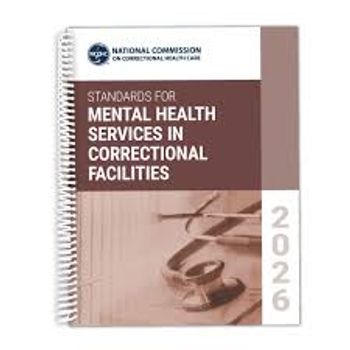
Interpreting Digital Information in Forensic Settings
How can digital therapeutics overcome barriers to psychiatric treatment in forensic settings?
As with any cutting-edge innovation, digital therapeutics (DTx) have their detractors. This is particularly evident when concerned doctors focus upon
Barriers to Treating Psychiatric Disorders in Forensic Settings
Forensic settings can be free-standing, secure medical facilities, or they can be correctional settings in which individuals accused of criminal offenses are housed while awaiting trial. These patients are being assessed for competency to stand trial, criminal responsibility, or other legally relevant issues. They may be receiving psychiatric treatment in order to become competent, or perhaps they are being retained in a forensic setting so they remain competent and legal proceedings will not be delayed any further.
Individuals who have already been convicted may be retained in forensic settings as well. These services are typically delivered in jail and prison environments, and sometimes draw upon the same resources as those used for pretrial assessment. Patient care may focus upon such issues as serious mental illness, anger management, sexual offender recidivism, and societal reintegration. Forensic services can also be rendered subsequent to release in the context of mental health courts, drug courts, and outpatient commitment.
Serious mental illness is significantly overrepresented in jail and prison populations. A recent
Not only are the numbers of mentally ill in prisons and jails continuing to climb, the severity of inmates’ illnesses is on the rise as well.
Many inmates with mental illness need intensive treatment, and officials in the prisons and jails feel compelled to provide the hospital-level care that these inmates need.
The root cause of the problem is the continuing closure of state psychiatric hospitals and the failure of mental health officials to provide appropriate aftercare for the released patients.
Why does this matter? In no particular order, the nationwide status of mental health services for individuals behind bars is costly, ineffective, and ethically challenging. Approximately 14% of prison health care spending is used for
How Can Digital Therapeutics Address These Problems?
DTx is not a panacea, but it offers exciting new opportunities for cash-strapped, understaffed, and overutilized forensic operations.
In inpatient forensic settings, DTx enables clinicians to gather more data, which leads to more accurate assessment and more focused treatment. This process also helps correctional staff and court personnel to conduct tracking and feedback functions with pretrial detainees.
DTx allows for real-time risk prediction based upon sensor data and contributes to early detection of evolving mental health conditions. This is particularly important in light of the problems that can emerge when forensic detainees are deprived of services during the pendency of
Furthermore, DTx has a vital, supplemental role to play in outpatient forensic settings. It assists in keeping patients in the community and out of the criminal justice system, in large part by reducing medication noncompliance for those who have mental illness and a history of violent behaviors during acute exacerbation such conditions. This, in turn, can improve the prognosis concerning both mental illness and medical comorbidities for a particularly high-risk population.
DTx affords better remote monitoring and automatic check-in options for appointments with treatment providers, probation/parole officers, and others, which is a particular boon given how little we otherwise have learned about how individuals with mental
The
Vignette A
“Drew” is awaiting trial on charges of kidnapping and murder. The judge ruled 6 months ago that Drew was incompetent to stand trial, based upon the opinions of 2 forensic psychiatrists—1 for the defense, 1 for the prosecution—both of whom agreed that the most relevant underlying diagnosis was posttraumatic stress disorder (PTSD). The East Dakota Forensic Psychiatric Center has placed Drew in its Competency Restoration Program.
Numerous problems have arisen. Drew complains that “trying to deal with a machine” while addressing prior traumatic events is “cold,” “boring,” and “impersonal.” When Drew is informed that the doctors who conducted the competency evaluations would have a conflict of interest in providing treatment, and that the office of the only board-certified trauma specialist in the state is located 100 miles away, Drew suggests that “maybe at least one of the guards can read me this stuff instead of my just seeing it on a screen.”
Screen access itself is a problem. The Psychiatric Center’s few available computer terminals are dominated by a combination of court hearings and attorney video conferences. Psychiatric staff actually took up a collection to purchase a smartphone so that Drew could utilize DTx resources on a regular schedule; the device was branded as contraband by prison administrators and never used.
Responding to Drew’s concerns about what sorts of unhelpful disclosure might be occasioned by the Psychiatric Center’s use of DTx, defense counsel are demanding to review the manuals and algorithms for the DTx being utilized. They want to attend DTx-based sessions themselves, and to record them if possible.
Faced with a lagging restoration timeline due to a lack of progress concerning Drew’s PTSD symptoms, psychiatric staff obtained a budgetary waiver that allowed one of their clinical psychologists to receive specialized weekly telephonic supervision from the state board-certified trauma specialist. The trauma specialist also agreed to travel to the Psychiatric Center on a monthly basis to meet with Drew and the clinical psychologist in person. Psychiatric staff remain convinced of the value of DTx, but they recognize that the parties with whom they must collaborate are not yet ready.
Vignette B
“Shawn” is subject to outpatient commitment as part of a diversion program, after pleading no contest to half a dozen different charges of robbery in the first degree. The focus of court-ordered treatment is a combination of anger management, medication compliance, and community living skills. According to the court’s Diversion Coordinator, group therapy alone will not suffice; individual treatment—by DTx, if feasible—will be necessary.
The XYZ Community Treatment Center is a brand-new facility located just outside of Capital City in West Carolina. It has been hiring staff at an impressive pace, but it has yet to develop much of an integrated service team or attract many senior specialists. Groups are filling, but seats in those groups are still available. A licensed clinical social worker is willing to provide individual therapy for community living skills, but she has declared outright that some other source of treatment will be necessary for anger management and medication compliance.
Shawn does not own a personal computer, and Shawn’s defense attorney insists that the public library is not a suitably private venue for receiving DTx services. Although the smartphone Shawn owned prior to his arrest is still functional, it has insufficient memory to handle the DTx programs identified by the Treatment Center Director in consultation with the Court’s Diversion Coordinator.
Fortunately, the Treatment Center’s licensed clinical social worker has been able to obtain funding for Shawn to obtain a smartphone with sufficient memory, a large screen for viewing (since Shawn is also visually challenged), and other up-to-date features. What Shawn has not been able to secure is WiFi access at home, where paid WiFi services are prohibitively expensive, and where the publicly available wireless signal is too weak for DTx to function effectively.
The Treatment Center has a solution. Shawn can use one of the empty offices at the Treatment Center and access that facility’s WiFi free of charge with a special password. The Treatment Center’s licensed clinical social worker has also managed to obtain extra travel vouchers for Shawn to travel to the center for DTx sessions when they do not coincide with a group counseling session or an individual community living skills session. Shawn responds well to DTx, meeting the Treatment Center’s milestones for clinical progress and the court’s requirements for compliance.
Concluding Thoughts
In forensic settings, it is important to think of DTx and other technologically informed options as physician extenders rather than as a tool for enabling nonclinical entities to make clinical decisions. In the hands of those with alternative agendas, or of those who might misinterpret psychiatric data willfully or otherwise, digital information can gravely harm individuals and can serve to make a stigmatized population even more vulnerable.
Similar concerns can be—and have been—leveled at every successive innovation in modern psychiatric care. There is no percentage in unthinking technophobia for forensic psychiatric personnel and the systems they support. DTx is here to stay, and the advantages far outweigh the disadvantages for those ready to proceed with due foresight and caution.
Dr Biswas is the Director of the Psychiatry, Law, and Society Program (PSLP) at Brigham and Women’s Hospital in Boston, Massachusetts. She is a board-certified forensic psychiatrist with a focus on social systems, cultural dynamics, criminal justice reform, and legal issues impacting psychiatric care. Dr Drogin is the Affiliated Lead of Psycholegal Studies for the PSLP. He is an attorney and board-certified forensic psychologist with a focus on expert witness testimony and trial consultation. Drs Biswas and Drogin both serve on the faculties of Harvard Medical School and the Harvard Mass General Brigham Forensic Psychiatry Fellowship, of which Dr Biswas is the Co-Director.
References
1. Makin S. The emerging world of digital therapeutics. Nature. 2019;573(7775):S106-S109.
2. Fazel S, Hayes AJ, Bartellas K, et al. Mental health of prisoners: prevalence, adverse outcomes, and interventions. Lancet Psychiatry. 2016;3(9):871-881.
3. Torrey EF, Zdanowicz MT, Kennard AD, et al. The treatment of persons with mental illness in prisons and jails: a state survey. Treatment Advocacy Center. April 8, 2014. Accessed July 14, 2021.
4. State prison health care spending: an examination. The Pew Charitable Trusts. July 2014. Accessed July 14, 2021.
5. Prison mental healthcare lawsuit to proceed as class action. Associated Press. November 26, 2016. Accessed July 14, 2021.
6. Biswas J, Drogin EY, Gutheil TG. Treatment delayed is treatment denied. J Am Acad Psychiatry Law. 2018;46(4):447-453.
7. Marion-Veyron R, Lambert M, Cotton SM, et al. History of offending behavior in first episode psychosis patients: a marker of specific clinical needs and a call for early detection strategies among young offenders. Schizophr Res. 2015;161(2-3):163-168.
8. Dell'Osso B, Glick ID, Baldwin DS, Altamura AC. Can long-term outcomes be improved by shortening the duration of untreated illness in psychiatric disorders? A conceptual framework. Psychopathology. 2013;46(1):14-21.
9. Forrester A, Exworthy T, Olumoroti O, et al. Variations in prison mental health services in England and Wales. Int J Law Psychiatry. 2013;36(3-4):326-332.
10. Lovell D, Gagliardi GJ, Peterson PD. Recidivism and use of services among persons with mental illness after release from prison. Psychiatr Serv. 2002;53(10):1290-1296.
Newsletter
Receive trusted psychiatric news, expert analysis, and clinical insights — subscribe today to support your practice and your patients.













